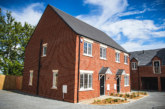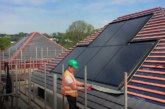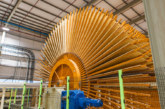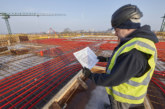
Following the launch of the London Energy Transport Initiative’s Climate Design Guide, Rob Woolston, director at multi-disciplinary design practice, rg+p discusses what it means for the housebuilding industry.
Climate change is a global conversation and we have reached a time where action needs to be more clearly defined so guides like this from LETI are essential. Fundamentally, it outlines how the entire supply chain can work together to ensure all new buildings meet climate change targets, and specifically achieve the route to zero carbon.
One of the conversations the wider industry has been having is regarding the actual definition – do we mean zero carbon, carbon neutral or carbon negative and what’s the difference between the three? The LETI defines zero carbon as whole life carbon, which it divides into two clear components: operational and embodied. Operational carbon refers to new buildings that do not burn fossil fuels and are entirely powered by renewable energy whereas embodied carbon highlights best practice targets for buildings that are made from re-used materials.
Unlike other design guidance that has been launched recently, the LETI report is clear that our industry knows how to design sustainable buildings, just that it needs some clear targets to achieve zero carbon. It sets out a trajectory for all new buildings: 10% to be zero carbon by 2020, 20% by 2021 and so on with the aim of 100% all designed buildings to be zero carbon by 2025 and all built buildings by 2050 in line with wider government targets. In principle this all makes sense but still seems ambitious given a) the rate of change normally associated with the construction industry and b) the immense cost and practical issues of achieving the target for existing stock.
One of the report’s limitations is that it has a very significant focus on new buildings and there is no guidance for retrofitting. Whilst new buildings can only compound the problem, we cannot let existing stock stagnate or worse, see a repeat of tragedies like Grenfell just because they were not given the same level of attention. There is also a seeming neglect for the other characteristics that make buildings habitable, enjoyable and sustainable – air quality, good light, controlled heat, accessibility, etc.
A key focus, and no doubt seen as a ‘quick win’, the construction of new housing on a large scale could have a significant impact. Also, from a practical point of view, applying the theories of sustainability to individual dwellings is a relatively manageable proposition. The concern however is that the cost, both in terms of build and time, will be passed on to the consumer at a time when house prices are already under the spotlight. We need to make zero carbon or even carbon reduction more appealing to the consumer so they value that initial capital outlay and will be rewarded by a long-term reduction in energy costs whilst also helping tackle climate change.
I think the message that’s clear from the LETI document is that we must act now, especially when statistics are released like 49% of the UK’s annual carbon emissions are attributable to buildings. A worldwide climate emergency has been declared so we all need to be accountable and work collaboratively towards its mitigation and resolution.









